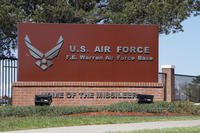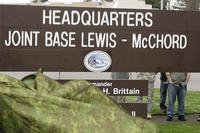 The advent and upcoming operational use of new Joint Strike Fighter (JSF)-aircraft cockpit information technology is likely to generate new paradigms for implementing the widely known Observe, Orient, Decide, Act OODA-loop concept made famous in the 1970’s by former Air Force Fighter Pilot Col. John Boyd, Air Force officials said.
The advent and upcoming operational use of new Joint Strike Fighter (JSF)-aircraft cockpit information technology is likely to generate new paradigms for implementing the widely known Observe, Orient, Decide, Act OODA-loop concept made famous in the 1970’s by former Air Force Fighter Pilot Col. John Boyd, Air Force officials said.
Boyd, who flew F-86 Sabre aircraft during the Korean War and went on to be a military theorist and Pentagon consultant, conceived of the OODA-loop notion as a method of winning a dogfight against an enemy fighter jet by, in part, more quickly anticipating fast-changing circumstances, orienting, observing, deciding and “acting.” In essence, a thrust of the idea was to synthesize information rapidly and make accurate and impactful decisions more quickly than an opponent.
These days, the fusing of sensor, weapons and electronic data made available to fighter pilots and air crews – in conjunction with the rapid integration with numerous mobile command and control centers -- provides new areas of application upon which to utilize or apply the OODA-loop paradigm, said Lt. Gen. Charles Davis, Military Deputy in the Office of the Assistant Secretary of the Air Force for Acquisition.
“We’re becoming much more efficient in terms of how we use information,” Davis explained. “Probably the most unique enabler that has come along since Desert Storm, Iraq, Afghanistan or Libya is the integration with our command and control centers and the Air Operations centers such as the AWACS the JSTARS.”
As a result, instead of only needing to Orient, Observe, Decide and Act relative to the actions taken by the “nose” of an enemy fighter jet -- air crews in a Joint Strike Fighter (JSF) aircraft, for example, will be able to make rapid decisions regarding what a potential enemy might be doing elsewhere as well – such as moving Surface to Air Missiles (SAMS) on the ground, Davis explained.
“Thing are becoming a much more holistic battle, maybe, than when Boyd was flying his F-86. He was focused on what you see the guy [enemy fighter] doing and where his nose was going. Now, you can sit and bring sensors in to decide about what the enemy is thinking about – such as taxiing his airplane or moving his AAA [Anti-Aircraft Artillery] or SAMS. There is an Observe, Orient, Decide and Act scenario that goes well beyond what you are watching a guy do with his airplane,” Davis explained.
While offering a relevant strategic insight regarding the potentially broader application of OODA-loop-type thinking and criteria, Davis’ comments in particular were offered in the context of a discussion about what he referred to as the game-changing, next-generation capabilities contained in the now-in-development F-35 JSF stealth aircraft.
For instance, the sensors and the integration with the JSF will improve a fighter-jet’s ability to conduct Intelligence, Reconnaissance and Surveillance (ISR) missions as well as integrate more quickly with those air assets which exclusively perform those missions, Davis explained.
“We’ve got to quit thinking of how we would use that airplane in terms of traditional missions. You are going to be picking up all kinds of visual and electronic data everytime you launch the airplane. It is providing you the next two or three levels above in terms of detail and whatever may be out there on the battlefield,” Davis said.
For instance, a JSF will be able to provide much more fidelity and definition in terms of the visuals and the current and future electronic signals of the battlefield, he added.
‘The actual level of intelligence you can gather with a two or a four ship of F-35s out there will certainly match or exceed the basic capability that comes off of the things we have out there now – the Predators, Reapers and other airplanes,” Davis explained.
All of the access to additional combat-relevant information in real time brings with it the requisite need to at times make fast determinations in battle, as Boyd’s OODA-loop initially suggests is necessary in dog-fights.
“With the JSF, you see a fused picture of all the sensors that are on board so you are looking at an integrated picture of every signal that it picks up. It not only offers the pilot much better SA {situational awareness}, but it also helps you prioritize what his next action should be,” Davis explained.
For instance, instead of having a need to view and consider information from a host of different displays such as a radar picture, radar warning picture, data-link picture and targeting-pod picture, a JSF air-crew will be able to simultaneously view a wide-range of information in real-time, Davis added.
“Think of it as taking every data source that is out there and getting an understandable, actionable picture display in the cockpit – as opposed to the days where it was federated, meaning you had to look at a radar display, a target display and a data link display,” Davis said.
Also, a Low Altitude Navigation and Targeting Infrared for Night (LANTIRN) Pod can help JSF aircrews geo-locate incoming signals from the ground such as enemy air defenses, radar and other electronic signals.
In addition, The JSF is engineered with its own internal focused and highly specific Electronic Attack capability because the aircraft will need to function in what strategists refer to as heavily-denied areas, Davis added.
As part of its high-tech line up of networking technologies, the JSF is configured to use LINK 16 a high-speed tactical digital data link. The aircraft is also built with a Electronically-Scanned Array (ESA) radar able to provide synthetic aperture rendering of air and ground pictures, Davis explained.
“It’s an ESA radar which produces a synthetic aperture picture, so it produces both air-to-air and air-to-ground pictures. Most of our new advanced electronically scanned array radars today do that,” he said.
The JSF program developmental strategy is, in part, grounded upon a series of incremental software “drops” — each one adding new capability to the platform. In total, there are more than 10 billion individual lines of code for the system, broken down into increments and “blocks,” F-35 program office officials explained.
“Software development remains a focus area of the joint program office. We have a solid baseline and we need to be able to execute on that,” said Joe DellaVedova, F-35 program office spokesman.
Software drop 2B is undergoing flight testing at Edwards Air Force Base, Calif., and Naval Air Station Patuxent River, Md; software Block 2B builds upon the enhanced simulated weapons, data link capabilities and early fused sensor integration of the Block 2A software drop, DellaVedova added.
“With Block 2B you can provide basic close air support and fire an AMRAAM {Advanced Medium Range Air to Air Missile}, JDAM [Joint Direct Attack Munition] or GBU 12 [laser-guided aerial bomb]. This allows the plane to become a very capable weapons system,” he said.
Overall, DellaVedova said the F-35 program office has been making substantial progress. Software drop 3I, which is a technical refresh of Block 2B, is slated to be ready by 2016.
Davis explained that the Air Force plans to achieve Initial Operating Capability with its variant of the JSF by 2016 with the 2B/3i software configuration; the final 3F software block will bring an increased ability to suppress enemy air defenses, he added.
Overall, Davis emphasized that the Joint Strike Fighter acquisition effort underscores the importance of maturing and prototyping new technologies before they are fully or formally developed as part of an acquisition program.
“Very rarely should we be out maturing new technologies in new platforms. We should let something go through the process of maturing new technology. Then, once we are certain that it is at a usable level, our acquisition programs can do the hard work of integrating,” Davis explained.
Davis emphasized that the capabilities of an F-35 are so much more advanced compared to today’s F-15 and F-16 aircraft – that a side-by-side-type comparative discussion is not merited.
“An F-35 is the equivalent of an F-16 with three fuel tanks, sniper pod, two 2,000-pound JDAMS {Joint Direct Attack Munitions}, two AMRAAMs { Advanced Medium Range Air to Air Missile} and two AIM 9Xs…. in a stealth configuration,” Davis explained. “That is not a configuration an F-16 can fly.”








